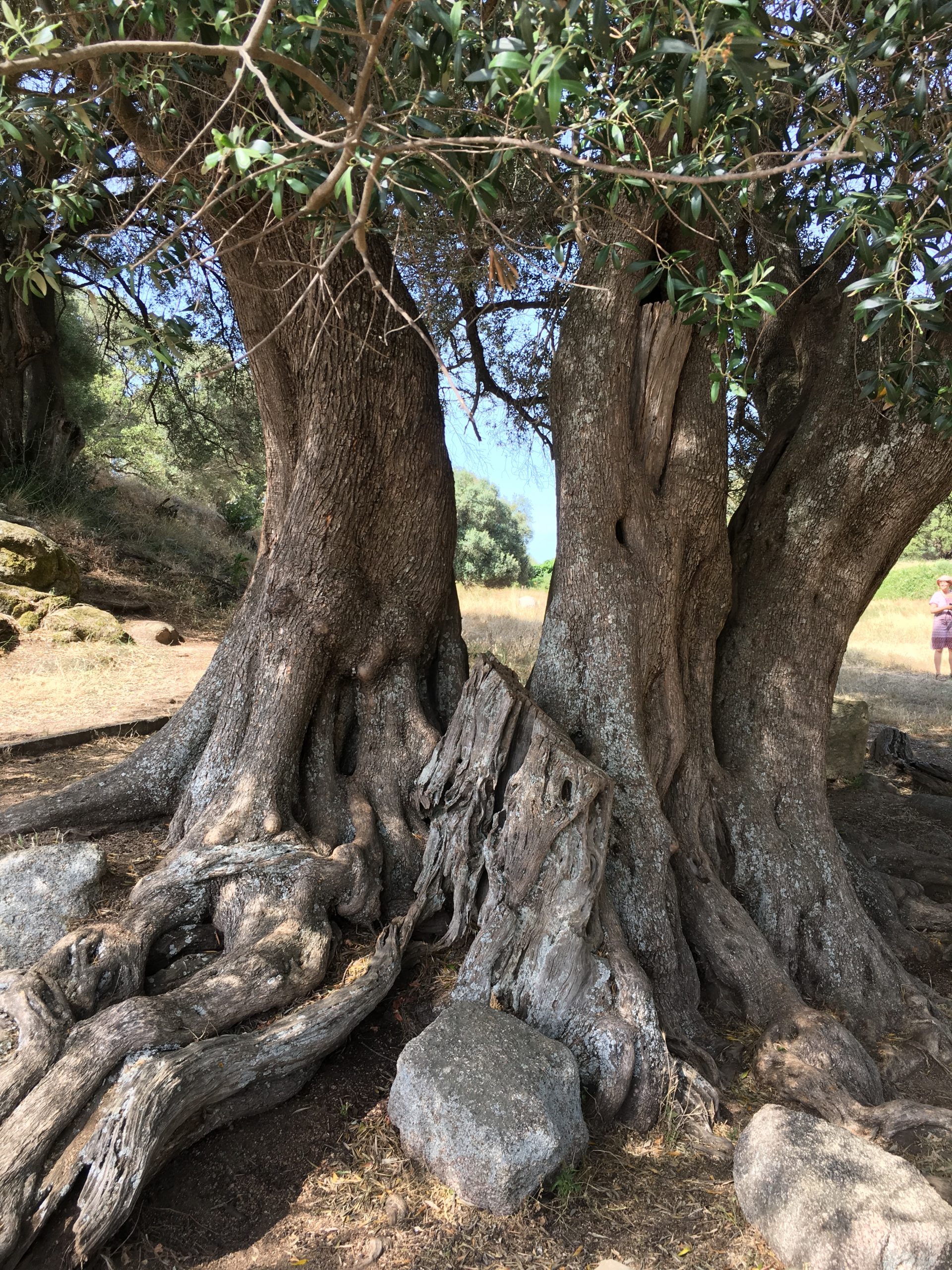
One of the things I love about olive trees are their longevity. Driving through the countryside you can see tree after tree with thick trunks, twisted or bent from the ravages of the wind, sometimes with holes in the center where parts of the tree have rotted or worn away. Despite the wear and tear, the tree itself is clearly alive, as evidenced by the silvery green leaves blowing gently in the breeze, and the fruit forming along its branches.
Touching one of these old olive trees connects you directly to history. Many of the trees I passed on my travels existed not just before I was born, but before my great-grandparents were born. There are olive trees alive today which were growing and producing fruit before the Roman Empire came into existence. Beyond the trees themselves, the use of olive oil stretches back nearly 6000 years. The oil was used as a source of light, and as nourishment of the body and soul– an essential element in both food and religious ritual.

I had the opportunity to visit one of these very old trees, still alive within the archeological site of Filitosa, located on the island of Corsica, France. The tree is estimated to be around 1200 years old. The trunk is thick and divided into parts, appearing like a small stand of trees rather than just one. Near the trunk is a small plaque, identifying it as a “tree of special interest of France,” and providing protected status. The tree itself is very large, spreading its leaves over a peaceful pastoral scene.


The site itself has artifacts from as far back as 3300 BCE. You can walk through stone structures likely used for housing and storage, as well as view stone mehnirs, or megaliths, spread throughout the site. These mehnirs are large stones carved with faces and armor. Archaeologists speculate that they may have been created with the belief that they would protect against enemies, but there is not a definitive answer to what purpose they serve. As you wander through the site, gentle music plays from unobtrusive speakers, making the experience meditative. It’s fascinating to contemplate the lives of these people who lived such a long time ago, and yet have a connection to us today, through the continued use of olive trees.



